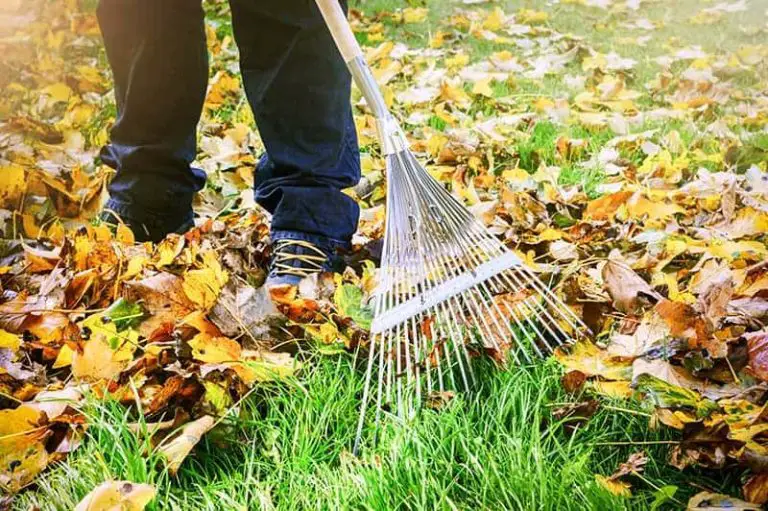What Is Air Hardening Clay Made Of?
What is Air Hardening Clay?
Air hardening clay, also known as air-drying clay, is a type of modeling clay that dries and hardens at room temperature. Unlike clays like ceramic clay that need to be fired in a kiln, air hardening clay does not require any special treatment to cure and become hard.
The main ingredients in air hardening clay are:
- Water-based polymer, like polyvinyl acetate or acrylic polymer
- Fillers like calcium carbonate or kaolin clay
- Preservatives and pH buffers
The polymers give air hardening clay plasticity and strength when dried. The fillers provide shape and structure. The clay dries and hardens as the water evaporates and the polymer chains crosslink and bond together.
Air hardening clay differs from polymer clays like Sculpey in that it contains water. It also does not require heat to cure. Compared to ceramic clays, air dry clay is convenient because it does not require firing. The finished pieces will be less durable though.
History of Air Hardening Clay
Air hardening clay, also known as self-hardening clay, first emerged in the 1930s with the development of clay that would harden when exposed to air. This innovation allowed artists and sculptors to work with clay that did not require firing in a kiln.
The creation of air hardening clay is credited to Henry Hardinge and Ralph Mayer in the 1930s. Hardinge, an artist living in California, wanted an easier way to make pottery and ceramic sculptures without needing a kiln. This led him to experiment with materials that would harden with exposure to air.
Around the same time in the 1930s, Ralph Mayer, a German ceramist, developed a formula for clay that involved Plastofix, a synthetic binding agent. When combined with natural clay, Plastofix allowed the clay to harden when exposed to air over time. This became the basis for modern air hardening clays.
Over the following decades, clay manufacturers continued to refine air hardening clay formulas to improve workability and hardening times. Key innovations included adding cellulose-based binders and plasticizers to improve elasticity and durability. Manufacturing methods also evolved to allow mass production of affordable air hardening clays.
Manufacturing Process
Air hardening clay is made through a process of mining, refining, molding, and packaging. Here are the key steps:
First, the raw clays are mined from deposits around the world. The clay is extracted from open pit mines or underground mines. Industrial minerals like kaolin, ball clay, and bentonite are commonly used. The clays may undergo an initial cleaning and sorting process near the mining site.
Next, the clays are further refined. This removes additional impurities and allows the manufacturer to achieve the desired properties. The clays may be blended together in specific ratios. Refining steps can include grinding, screening, filtering, and chemical processes.
After refining, the clay mixture is compressed into molds to form blocks or slabs. This molds the clay into convenient shapes for artists to use. Hydraulic presses apply high pressure to form the clay bodies.
Finally, the molded clay is packaged for distribution and sale. The clay products are wrapped in plastic to retain moisture. Labels are applied indicating the clay type, manufacturer, and usage instructions. The packaged clay is then shipped to art supply stores or distribution centers.
Following this multi-step manufacturing process allows factories to efficiently produce consistent, high-quality air hardening clay on a large scale.
Types of Air Hardening Clay
There are several common varieties of air hardening clay, each with their own unique properties and characteristics:
Oil-Based Clay – This is made from clay and linseed oil or mineral oil. It has a smooth, creamy texture and requires kneading before use. Oil-based clay doesn’t dry out quickly when exposed to air and has a long workability time. Popular brands are Plastalina and Plasticine.
Sulfur-Based Clay – Also called plastic sulfur, this clay is made by heating sulfur and combining it with other materials like oil or wax. Sulfur clay doesn’t dry out and has an elastic, stretchy texture. It has a faint sulfur smell. Popular brands are Claytoons and Luna Nueva Plastico.
Water-Based Clay – This clay is made from water mixed with cellulose compounds or natural gums. It has a smooth, doughy texture and dries by evaporation when exposed to air. Water-based clay is lightweight and can crack if dried too quickly. Popular brands are Activa Air-Dry Clay and Crayola Model Magic.
Polymer-Based Clay – This is made from synthetic polymer compounds like PVC or polyethylene. It has a smooth, flexible texture and hardens as the polymer chains crosslink when exposed to air. Polymer clay can be brittle if thin. Popular brands are Sculpey and Fimo.
Clay Composition
Air hardening clay is made from a mixture of minerals, oils and waxes that allow it to dry and harden at room temperature. The main ingredients are:
- Clay – This forms the bulk of air hardening clay, usually 50-70% of the total composition. The specific types used can include kaolin, bentonite, ball clay or fireclay.
- Fillers – Materials like chalk, gypsum or silica may be added at 10-30% to provide bulk and reduce cost.
- Plasticizers – Oils such as mineral oil, linseed oil or solvents are added at 5-15% to keep the clay soft and workable.
- Waxes – Paraffin wax, microcrystalline wax and synthetic waxes at 1-5% give strength and binding properties.
The clay is formed from hydrous aluminum phyllosilicates made of fine-grained minerals like kaolinite. The plate-like structure of clay particles gives plasticity when mixed with water, allowing air hardening clay to be easily shaped. When the water evaporates, the clay particles bond together, giving the finished sculpture rigidity and hardness.
Working Properties
Air hardening clay offers some unique working properties compared to other clays and modeling materials.
Plasticity refers to how malleable and flexible the clay is. Air hardening clay is very plastic when first conditioned, allowing it to be easily shaped and sculpted. However, the plasticity decreases over time as the clay begins to stiffen and harden.
Workability is related to plasticity in that it describes how easy the clay is to work with and manipulate. Air hardening clay has excellent initial workability, but the window for working time is limited before it starts to harden. Proper conditioning and keeping the clay wrapped can prolong the workability.
Drying time is the amount of time it takes for the clay to become hard, rigid, and non-malleable. Air hardening clay dries through evaporation, hardening fully in 24-48 hours. Using a fan or dehumidifier can accelerate drying. The clay remains workable during the drying process until it eventually hardens completely.
In terms of strength, air hardening clay is quite strong when fully hardened, being difficult to cut, break, or indent. It is more rigid and brittle than polymer clay. The finished pieces have high durability and longevity when handled with care.
Air hardening clay’s main limitation is the short window for working time. The drying process cannot be reversed or reactivated with water or solvents like other clays. Any alterations must be done while it maintains plasticity during the initial hardening phase.
clay Comparisons
Air hardening clay has some distinct differences when compared to other popular modeling clays.
Polymer Clay
Polymer clay is an oil-based modeling clay that cures when baked in an oven. It is very smooth and easy to condition, making it popular for detailed sculpting and modeling. Polymer clay remains flexible and durable after curing. In contrast, air dry clay will harden and become brittle over time. Polymer clay also comes in a wide range of colors that can be blended and mixed, while air dry clay is typically neutral colors like white, gray, or terra cotta.
Oil-based Clay
Oil-based clays like plasticine are made from oils, waxes, and clay. They never fully cure or harden and remain malleable. This makes oil-based clay good for animation and mold-making. Air dry clay will harden into a permanent sculpture or model. Oil-based clays also do not dry out when exposed to air like air dry clays can.
Ceramic Clay
Ceramic clay requires high firing temperatures in a kiln to fully cure. The resulting ceramic is hard, durable, and waterproof. Air dry clay cures at room temperature just from exposure to air. The finished pieces are still porous and fragile compared to fired ceramic. Ceramic clay also requires specialized glazing for color effects, while air dry clay can be directly painted.
In summary, air dry clay is an accessible modeling material perfect for crafters and hobbyists looking to create decorative objects, jewelry, or temporary sculptures without needing an oven or kiln to cure.
Creative Uses
Air hardening clay is popular for a wide variety of creative uses including:
Pottery
Clay artists often use air hardening clays for throwing functional pottery on the wheel or handbuilding sculptures. The clay holds fine detail well and doesn’t require firing. Finished pieces dry solid and durable. Glazes and stains can be applied for color and effects.
Sculpture
Sculptors take advantage of the moldability and stable drying properties of air hardening clays. Intricately detailed sculptures, busts, figurines, and more can be formed without needing a kiln. The clay is also light enough for larger than life sculptures.
Jewelry
Jewelry makers utilize air dry clays for fashioning homemade beads, pendants, rings, earrings, and other accessories. The flexibility allows rolling out thin sheets for cutting shapes or twisting long coils. Dried clay holds paints and metal leaf finishes.
Finishing Techniques
To enhance dried air hardening clay artwork, various finishing techniques can be applied:
- Acrylic paints
- Watercolor washes
- Stains
- Glazes
- Sealers
- Waxes
- Metallic leaf
Sealers help protect the clay surface and create a smooth finish. Clear finishes showcase the natural clay color while paints, stains, and glazes allow for countless custom looks.
Safety Considerations
Air hardening clay is considered non-toxic and safe for common uses. However, there are some safety measures to keep in mind when handling and storing air hardening clay:
Safe Handling
– Avoid skin contact with raw clay as it can dry out the skin. Wear gloves when handling large amounts of clay.
– Work in a well-ventilated area to minimize dust inhalation.
– Wash hands thoroughly after working with clay.
– Keep clay work surfaces clean and free of dust buildup.
– Take breaks to rest hands when doing extensive clay sculpting or pottery work.
Safe Storage
– Store unused clay in a sealed plastic bag or airtight container.
– Keep clay in a cool, dry place away from direct sunlight and heat to prevent drying.
– Avoid freezing clay as this can damage the clay structure.
– Keep clay out of reach of small children and pets.
– Discard clay that develops mold or an unpleasant odor.
By following basic studio hygiene and storage guidelines, air hardening clay can be safely used for arts, crafts, and DIY projects.
Frequently Asked Questions
Here are answers to some common questions about air hardening clay:
How long does air hardening clay take to dry?
Air hardening clay will usually dry within 24-48 hours if left in open air. Smaller pieces may dry faster, while larger pieces can take a few days to fully cure.
Can you speed up the drying process?
Placing air hardening clay in a warm spot with good airflow can help it cure faster. Using a hairdryer on a low setting can also accelerate drying time. Just avoid high heat that could cause cracking.
Is air hardening clay waterproof after it dries?
No, items made from air dry clay are not inherently water resistant. You can seal finished pieces with varnish, polyurethane, or other sealants to help protect them from moisture.
Can air hardening clay be used in an oven or kiln?
No, air hardening clays should be allowed to cure at room temperature only. The clays contain water that would turn to steam and crack the clay if baked at high temperatures.
How should you store unused air hardening clay?
To maintain its flexibility and workability, unused air hardening clay should be tightly wrapped in plastic and stored in an airtight container. Keep it away from heat, cold, and excessive moisture.




